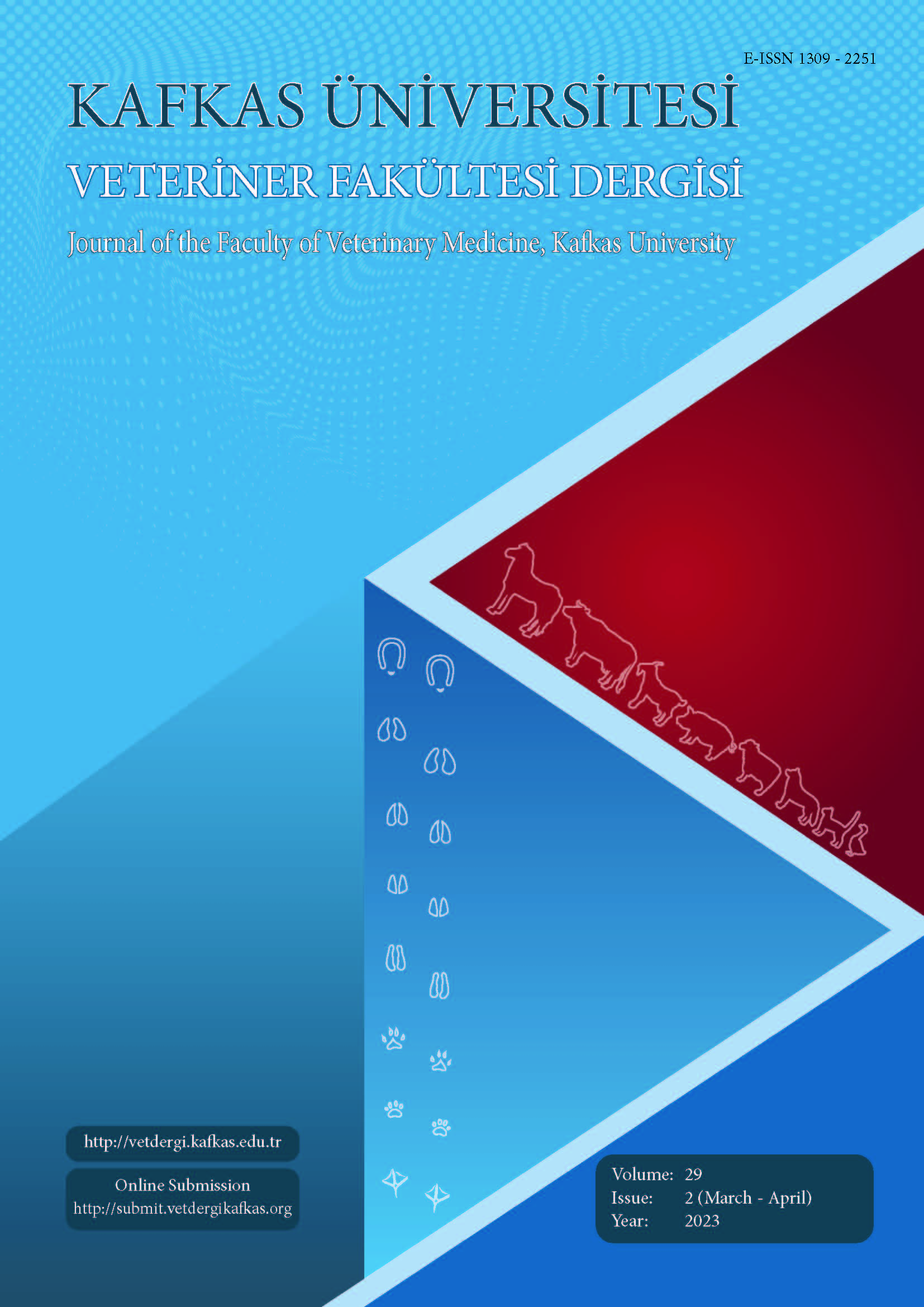
This journal is licensed under a Creative Commons Attribution-NonCommercial 4.0 International License
Kafkas Üniversitesi Veteriner Fakültesi Dergisi
2023 , Vol 29 , Issue 2
Study on the Skeletal Muscle Transcriptomics of Alxa Gobi Camel and Desert Camel
1College of Veterinary Medicine, Inner Mongolia Agricultural University, Key Laboratory of Clinical Diagnosis and Treatment Technology in Animal Disease, Ministry of Agriculture and Rural Affairs, Hohhot, 010018, P.R. CHINA2Animal Disease Prevention and Control Centre of Ejina Banner, Dalaihub Town, Alxa League, Inner Mongolia Autonomous Region, 735400, P.R. CHINA
3Comprehensive Support and Technology Promotion Centre of Yingen Sumu, Alxa Left Banner, Alxa League, Inner Mongolia Autonomous Region, 750323, P.R. CHINA
4Animal Husbandry and Veterinary Technology Promotion Centre of Alxa League, East Side of Yabrai Road, East City District, Bayanhot Town, Alxa Left Banner, Alxa League, Inner Mongolia Autonomous Region, 750306, P.R. CHINA DOI : 10.9775/kvfd.2023.29002 In order to explore the reasons for the difference in meat production performance between Alxa Gobi camel and Desert camel, we used high-throughput transcriptome sequencing technology, HTSeq, DEGseq and Gene Ontology (GO) and Encyclopedia of Genes and Genomes (KEGG) databases to compare the skeletal muscle gene expression between the two types. A total of 484 classification items were significantly enriched with Gene Ontology (GO) function, among which 246 were related to biological processes, accounting for 50.8%. One hundred eighty-four were related to molecular function, accounting for 38.1%. Fifty-four were related to cell components, accounting for 11.1%. Gene Ontology (GO) function was significantly enriched to 339 up-regulated genes and 108 down-regulated genes. There were 6116 differentially expressed genes annotated in Kyoto Encyclopedia of Genes and Genomes (KEGG) database. Pathway significance enrichment analysis revealed that these genes were involved in 250 biological metabolic pathways, among which 19 had extremely significant differences, 37 were involved in skeletal muscle development, and 13 were involved in fat metabolism. The results showed that Alxa Gobi camel evolved more genes and signaling pathways related to skeletal muscle development and fat deposition than that of Alxa Desert camel during the long evolutionary process, which changed the traits of Alxa Gobi camel and improved its meat performance. Keywords : Alxa Bactrian camel, Gene ontology, Kyoto Encyclopedia of genes and genomes, Skeletal muscle transcriptomics










